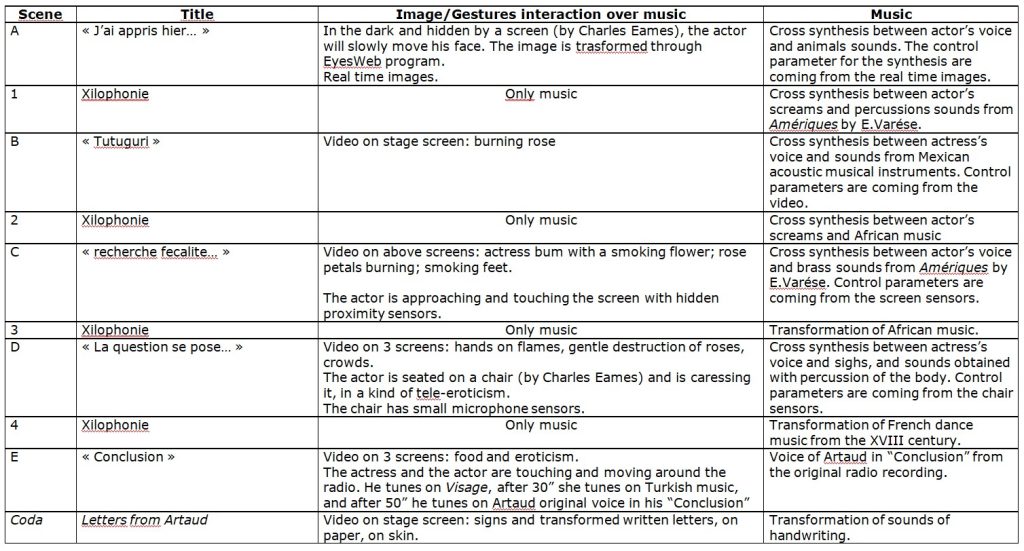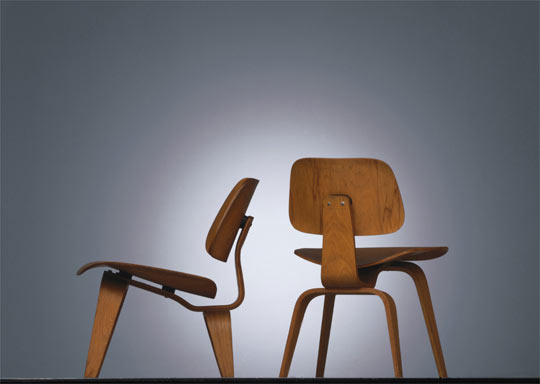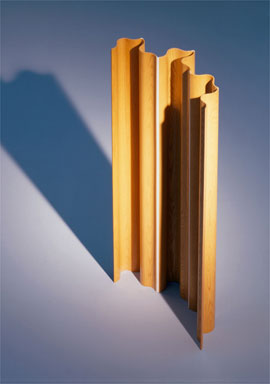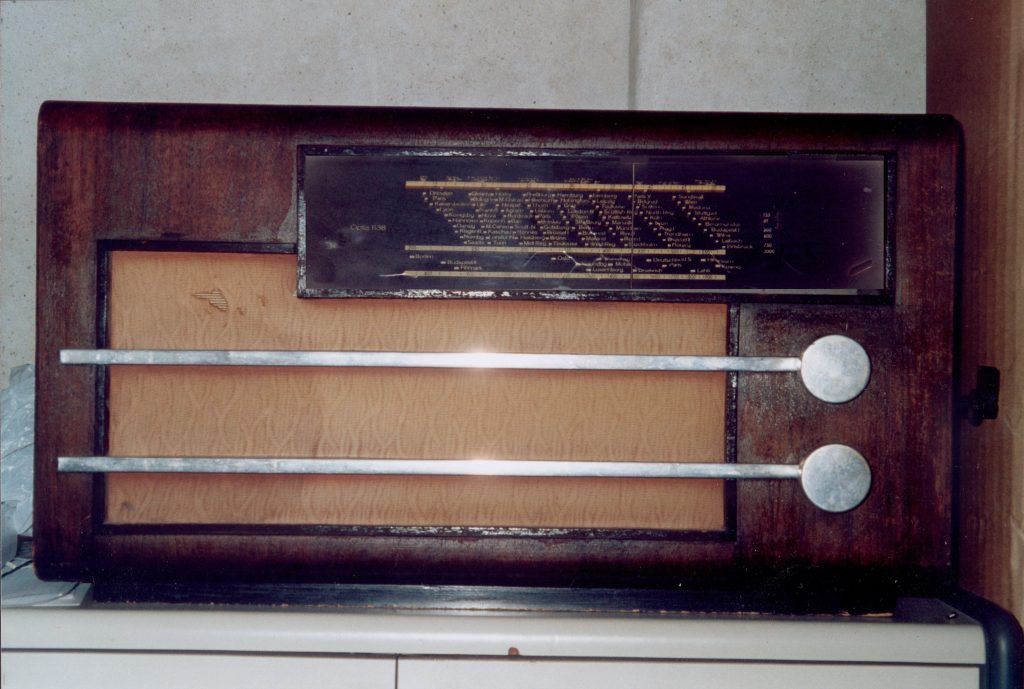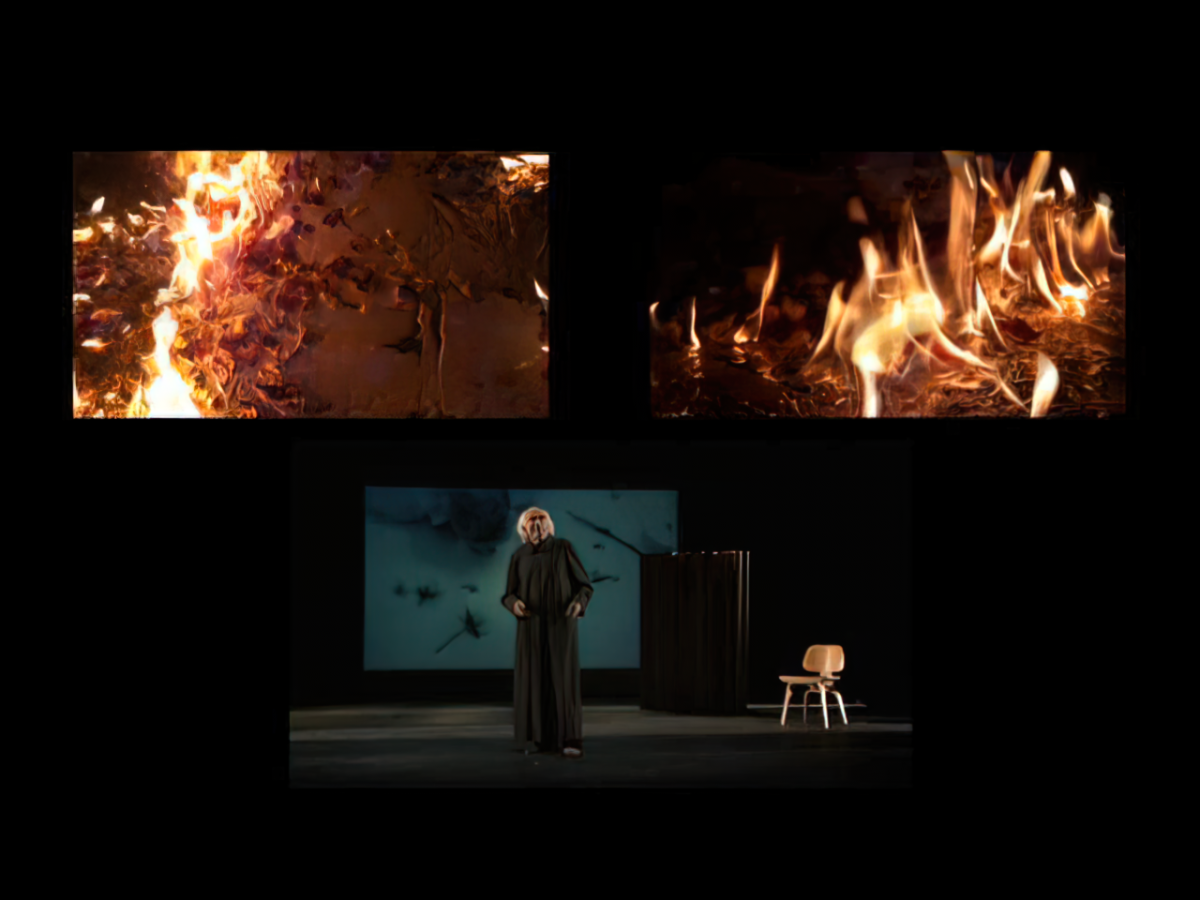(2005) two actors and live electronics. Text by Antonin Artaud (“Pour en finir avec le jugement de dieu” and other writings, Gallimard Pub.), with a quotation from Visage by Luciano Berio (Universal Edition and courtesy Talia Pecker Berio) [45’]
Premiered at XXLVI Festival Internazionale di Musica Contemporanea, Venezia, September 30th 2005, Arsenale, Teatro Tese delle Vergini)
Project and Music: Roberto Doati
Video: Paolo Pachini (actresses: Marta Paola Richeldi, Shila Anaraki)
Actors on stage: Giorgio Bertan and Marta Paola Richeldi
Stage and Scene Director, text assembler: Giuseppe Emiliani
Light Designer: Mauro Marri
Multimodal System and sensors: InfoMus Lab, DIST-Università di Genova
Stage objects by Charles Eames: vitra
Commissioned by La Biennale di Venezia
Realized with a Fellowship from MacDowell Colony
The term avatar (“misadventure”, but also “metamorphosis”, “incarnation”) is used by Antonin Artaud as subtitle for his last work “Pour en finir avec le jugement de dieu” (To have done with the judgement of God). Nowadays avatar is also a virtual double of a human being, a digital alter ego.
So the title wants to indicate the foundations of my work: the double (God as Lucifer alter ego? Excrements as spirit alter ego?) and digital technology language (Lucifer alter ego?).
Computer technology is my habit of mind, is my double, and I use it here to transform sounds and voices of the two characters (Giorgio Bertan and Marta Paola Richeldi), always on the borderline between logocentrism and melocentrism. I use it to project the sounds into the real space through 10 loudspeakers. «To make metaphysics of the spoken language means […] to break it up and to project it dynamically into the space». I make use of the gestures on the stage, as well as the three screens video projection, capturing them with EyesWeb (InfoMus Lab , DIST-Genova University) and mapping them to synthesis and processing data. Thanks to this technology I can easily realize a full interaction between sounds, signs and actions, combining them in order to make an effective language: the theatre. «Instead to confine these dissonances to one sense area, we will let them go through all the senses, from a colour to a sound, from a single word to a light, from some gestures trepidation to a plain surface of sounds etc. etc.».
An example is given in the 4th scene when the actor is caressing a chair and according the gesture quality, “recognized” by the chair, the actress voice will be affected, also generating different kinds of sigh: desire, pleasure, anguish. On the stage there are three objects to interact with: a chair and a screen by Charles Eames (courtesy Vitra), and a Polish radio, all from the 40s of XX Century.
The choice of such an important text by Artaud is motivated by the will to bring it back to its original context which is so close to the work of Pierre Schaeffer. Artaud was commissioned by the French Radio to create a recorded work, but its broadcasting was prohibited (as well as the later Visage by Luciano Berio, heard in the 5th scene, thanks to Universal Edition and Talia Pecker Berio). On Sept. 4th 1948, six months after Artaud’s death, the Director of Radiodiffusion Française Wladimir Porché, who was responsible for the censorship over “Pour en finir avec le jugement de dieu”, open the CER, the experimental radio broadcasting center that can be considered the birthplace of the latter Groupe de recherche de musique concrète.
The scene
Two actors on stage.
Three objects: a chair and a screen by Charles Eames (courtesy Vitra), a Polish radio, all from the Forties of XX Century. The chair has 3 hidden microphones to keep track of the gestures over it, the screen has proximity sensors to keep track of the movement around it, the radio has 2 MIDI knobs, 1 MIDI switch and proximity sensors to keep track of the movement around it.
All the information coming from the object is transformed into MIDI signal and used to control the live electronics transformation of the voices.
The videos are projected over 3 screens: two up above the scene, one on the stage.
A scheme of the Venezia stage is included here.
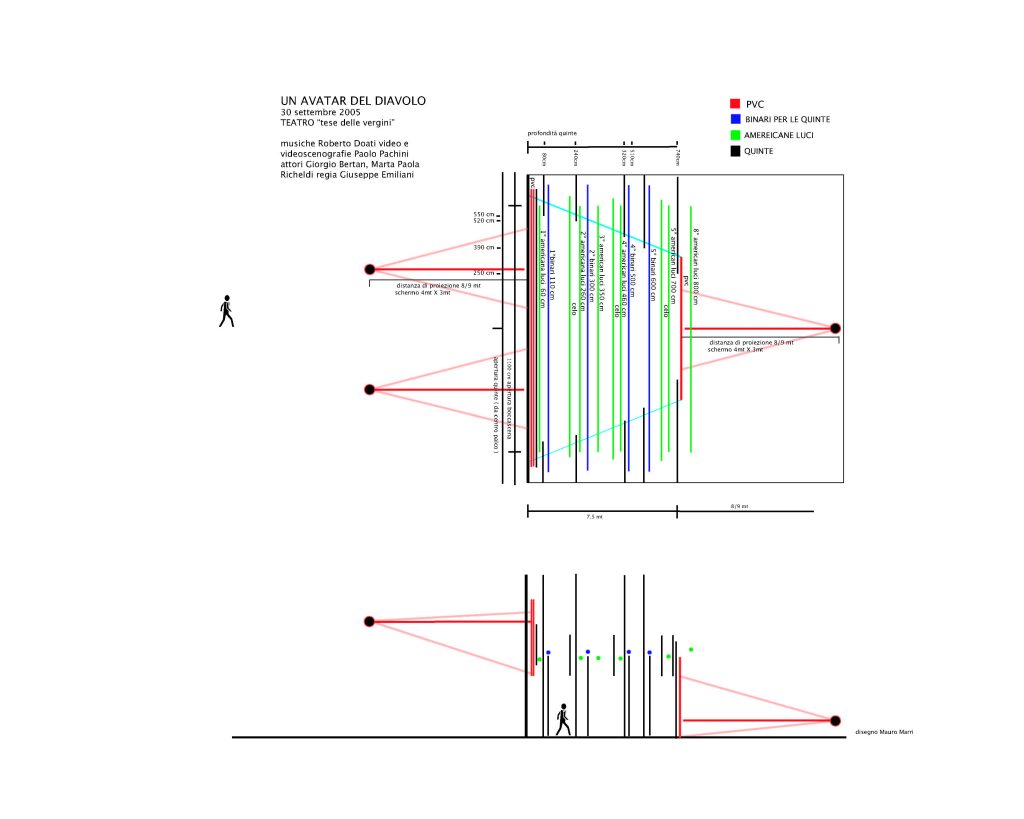
Storyboard
